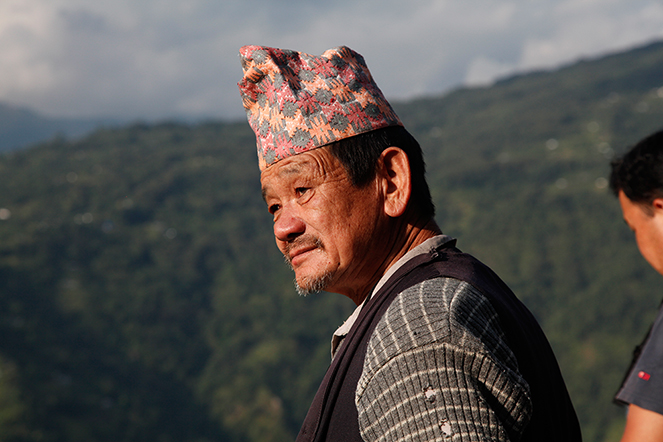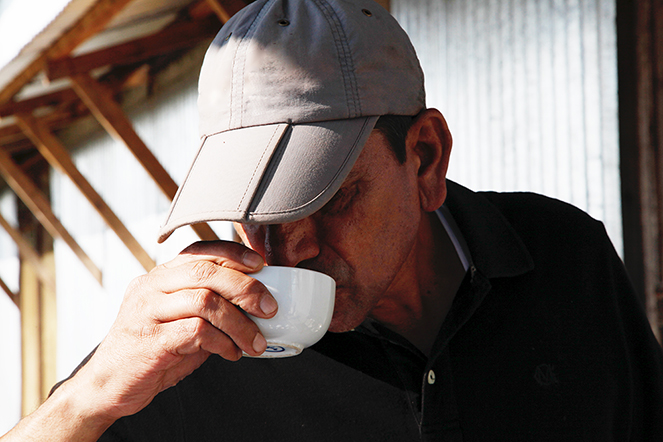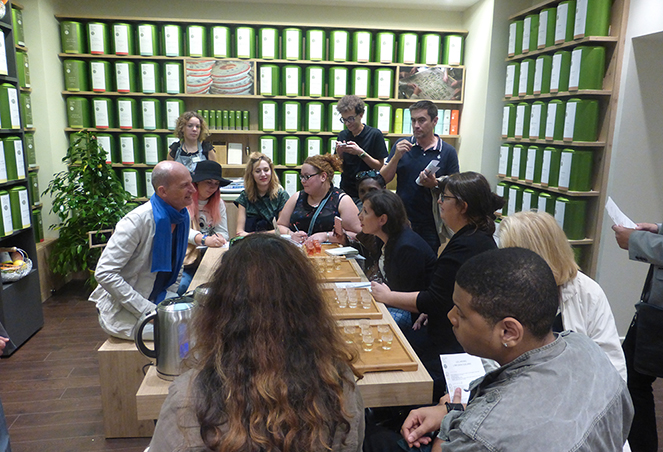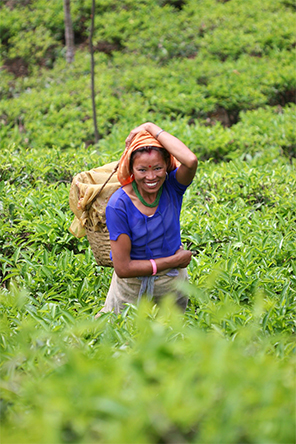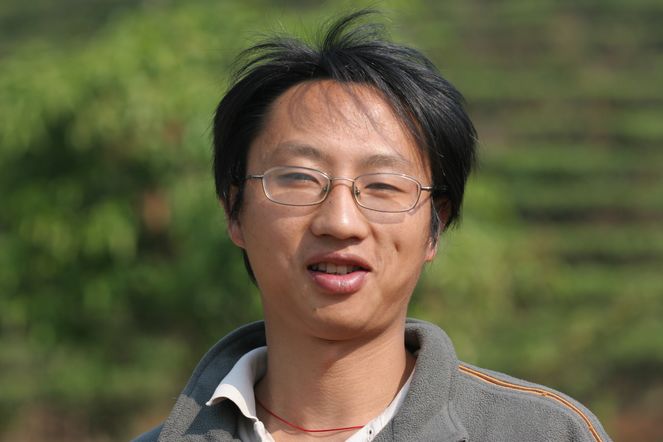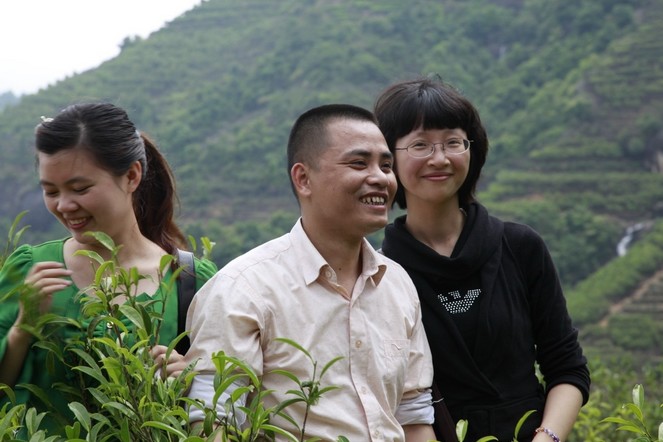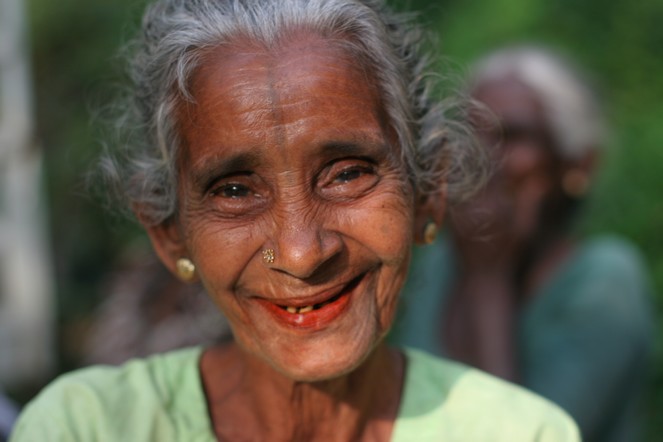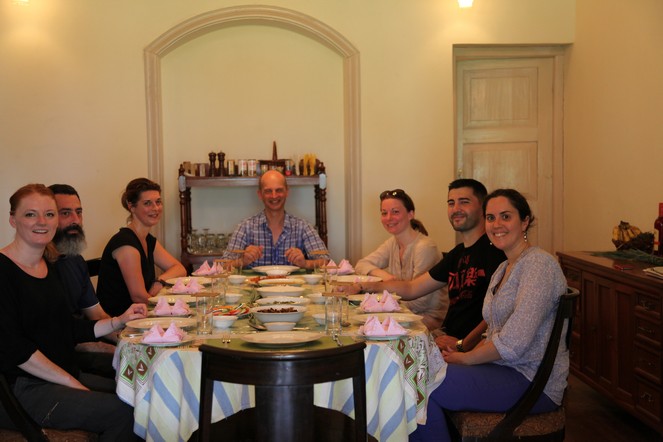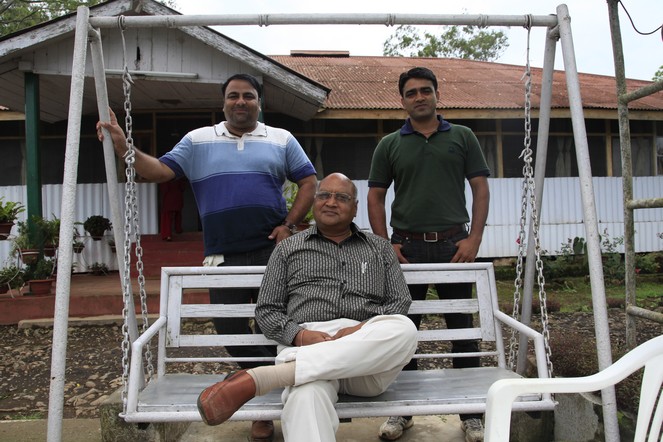In his village of Soyam, Yaad Bahadur Limbu is known as the “tea father”. He was the first to plant tea in the village, and today, tea is its main source of income. Everyone is involved. To reach Soyam, you must cross a suspension bridge and then climb for several hours. You pass terraced rice paddies and fields of millet, and cross farmyards. When Soyam’s villagers harvest the tea leaves, they are transported on horseback. This requires four or five horses. They take the same path as the one that had me huffing and puffing, and they cross the same suspension bridge. Each horse wears a pack saddle allowing it to carry a load of 100 kilos. The caravan takes five hours to reach the factory, and must return to the village the same evening. It is a long expedition.
Tea people
Andrew Gardner: passionate about supporting Nepalese teas
I have just returned from Nepal, where I had the opportunity to spend several days with my friend Andrew Gardner, who came to join me in Ilam valley. He had planned a four-hour walk for me, to reach a village of small producers. Andrew has worked on several plantations, but you could say he was the first to make very good teas in Nepal. We owe the renaissance of tea in the country to him. He started by working at Jun Chiyabari, and he is now applying his talents at Guranse. He’s passionate about what he does.
A time to talk with bloggers
I love spending time with tea producers, but I also really enjoy talking to our customers or, as I did this week at our Rue Vieille-du-Temple store, with bloggers who had come to discover and taste our latest creations: Les Jardins. I spoke about how gardens were a source of inspiration; the joy of walking through a favourite garden in different seasons; how these new infusions can be enjoyed hot, at room temperature, or iced. Of course, we also talked about “grand cru” teas, and food too.
Special time spent with tea pluckers
The lunch break offers a special opportunity to sit down with the tea pluckers and get to know them. They don’t often get to see buyers, and are even less likely to have a conversation with them. It doesn’t take long before shyness turns into spontaneity. These are special moments which I enjoy very much.
Smiling tea pluckers
Tea pluckers work very hard, yet when I meet them in the middle of the fields they greet me with big smiles. They look at me with a happy expression. These radiant faces contrast with the ones we see so often around us. In our cities, life is no easier or harder than on a tea plantation. But sometimes we forget to pay attention to others. We look at each other harshly. We live a bit like strangers. We complain about nothing. I can’t wait to get back to my mountains!
Gary, a true connoisseur of teas from south-west China
Every year my friend Gary, who lives in Kunming and runs a tea store there, sends me lots of pu erh samples. Raw pu erhs, cooked pu erhs, pu erhs in cake form or loose, pu erhs of every age, from very young to very old. I always look forward to receiving them. I’ve known Gary for more than 20 years. He was young when we met and was working for the state organisation in charge of exporting Yunnan teas. He has an excellent knowledge of all the teas produced in south-west China. Tea is his life.
Feng Huang Dan Cong: one of the rarest teas in China
Feng Huang Dan Cong, or Phoenix Tea, is one of the rarest China teas. Just a handful of farmers, including the Huang family, seen here, whom I was delighted to photograph, process these large leaves whose lingering bouquet evokes flowers, fruits, wood and spices by turn. If you love fine teas you should taste this at least once in your life.
Keeping tea
The optimal storage period can vary a great deal from one tea to another. Green teas from Japan and China do not last long, and just a few months after harvest the difference in flavour is noticeable. The same goes for first flush Darjeelings. On the other hand, what are known as dark teas, the famous Pu Ers, get better with age. Lastly, many black teas as well as the most oxidised of the Wulongs often retain their qualities for years. Like this Nepalese plucker whose smile, charm and generosity are impervious to the passing of time.
The Palais des Thés team discovers the plantations of Darjeeling
Every year I set off on an exploration of the tea plantations with senior staff from Palais des Thés. It is an opportunity to introduce them to an extraordinarily beautiful region of the world and it allows them to familiarise themselves with different cultures and, of course, to learn about every stage in the production of tea.
It is also a chance to spend some good times together, like here at Tumsong, where we are enjoying a delicious meal.
In Darjeeling, some very experienced planters act as mentors
In Darjeeling, some very experienced planters supervise a number of plantations. This is the case with Anil Jha, for example, or Gopal Somani, pictured here in the company of Rajesh Pareek, Manager of Puttabong Tea Estate and Ravi Jakhmola, Manager of North Tukvar Tea Estate.
Gopal fulfils this role of mentor brilliantly.

